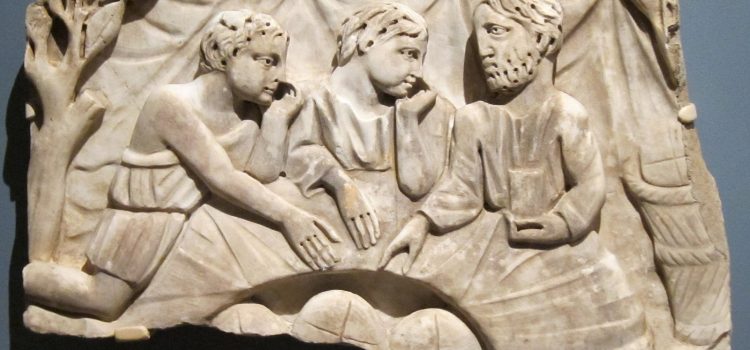

This article is an excerpt from the Shortform book guide to "The Immortality Key" by Brian C. Muraresku. Shortform has the world's best summaries and analyses of books you should be reading.
Like this article? Sign up for a free trial here.
What is a “refrigerium”? What was the meaning behind the rituals performed during the refrigerium ceremony?
The refrigerium was an ancient Roman custom conducted by female priestesses and centered on the consumption of wine. The function of these rituals was originally the commemoration of the dead, but over time, it evolved into remembering the death and the resurrection of Jesus Christ.
Keep reading to learn about the refrigerium, its meaning and function, and its connection to the Christian Eucharist.
Refrigeriums: Depictions of the Divine Feminine and the Eucharist
Another overlap between Greco-Roman pagan customs and Christianity, which may be the most obvious link to the Eucharist, is the ancient Roman custom called the refrigerium. This was a funerary feast common in the pre-Christian Roman world that served the function of honoring and communicating with the dead. Two central features of the refrigeriums were wine and women. Wine was said to enable contact between the living and the dead, and sacred priestesses prepared and dispensed it.
Muraresku says any new religion introduced to the Greeks (in this case, Christianity) would have to include a divine feminine element in order for the Greeks to adopt it. So, he argues that divine femininity was another essential feature of proto-Christianity. In the refrigeriums, we see the combination of sacred wine and sacred femininity, coming together in a mystical ritual that continued for hundreds of years after the introduction of Christianity to the Greeks and Romans.
There are hundreds of miles of catacombs underneath Rome, and artwork still remains on the walls and ceilings. Scholars debate whether some of the art depicts pagan refrigerium rituals or Christian Eucharist rituals because it contains elements of both. Muraresku describes scenes of female-led, or possibly entirely female, rituals centered around wine, bread, and fish. Believed to be from the third century AD, he argues that these artworks are likely depictions of that time period when the pagan and Christian rituals were inseparable.
Another area of the catacombs has art dated to the late third or early fourth century that clearly depicts women officiating ceremonies. These scenes include the words “love” and “peace,” as well as the phrases “mix it up for me!” and “hand over the calda.” Calda, Muraresku explains, literally translates to warm (or hot) stuff, but scholars say it refers to a drink that was a mixture of wine, hot water, and herbal intoxicants, commonly drunk in the winter. He says these scenes show women presiding over groups of men, indicating that women were in charge of the ceremonies and also of “mixing” and dispensing the wine.
(Shortform note: In this video, art historians discuss a Roman artwork from around AD 400. This was after Christianity was officially adopted and pagan customs were outlawed, but the artwork has the distinctive pagan features that Muraresku discusses—a woman who appears to be a priestess making some sort of offering at an altar. The scholars also point out that an oak tree and some ivy in the art are symbolic of the gods Jupiter and Bacchus.)
Based on what he learned from the Roman catacomb art and the related scholarship, Muraresku argues that these refrigeriums were the origin of the Eucharist. He argues that these were rituals for remembering the dead, which evolved into rituals for remembering the death and resurrection of Christ. And the wine, he says, was what enabled the living and the dead to be in contact.

———End of Preview———
Like what you just read? Read the rest of the world's best book summary and analysis of Brian C. Muraresku's "The Immortality Key" at Shortform.
Here's what you'll find in our full The Immortality Key summary:
- The secret that kept ancient Greeks and early Christians from fearing death
- The origins of Christianity and its overlap with pre-existing pagan customs
- The real reason why women can't be priests






